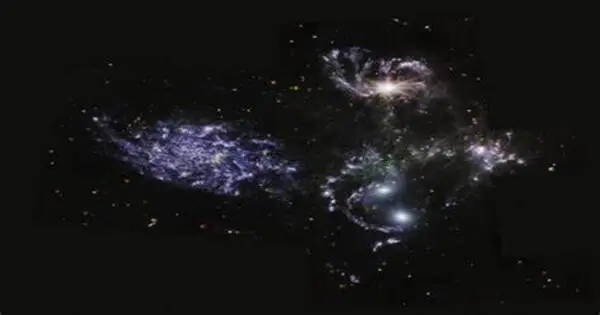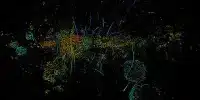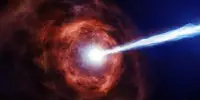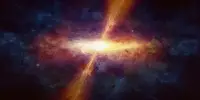With the launch of the James Webb Space Telescope, astronomers can now see so far back in time that we are reaching the epoch when we believe the first galaxies were formed. Throughout most of the history of the Universe, galaxies appear to follow a tight relationship between how many stars they have generated and how many heavy elements they have formed. However, we are now seeing evidence that this relationship between the number of stars and elements does not hold true for the very first galaxies. The reason is most probable that these galaxies are still in the process of formation and have not yet had enough time to produce heavy elements.
The Universe is alive with galaxies, which are massive groupings of stars and gas, and we can see them both close and far as we look deep into the universe. Because light takes longer to reach us the farther away a galaxy is, we are basically looking back in time, allowing us to construct a visual narrative of their evolution over the course of the Universe.
Observations have revealed that galaxies have been in a state of equilibrium for the last 12 billion years, or 5/6 of the Universe’s age: there appears to be a fundamental, tight relationship between how many stars they have formed and how many heavy elements they have formed. In this context, “heavy elements,” means everything heavier than hydrogen and helium.
This relation makes sense, because the Universe consisted originally only of these two lightest elements. All heavier elements, such as carbon, oxygen, and iron, was created later by the stars.
The findings provide us with the first glimpse into the earliest stages of galaxy formation, which appear to be more intimately connected with the gas between galaxies than we previously thought.
Kasper Elm Heintz
James Webb peers deeper
As a result, the very first galaxies should be “unpolluted” by heavy elements. However, until recently, we were unable to look so far back in time. The reason, in addition to being far away, is that the longer light travels through space, the redder it becomes. You had to look all the way into the infrared part of the spectrum to view the most distant galaxies, and only with the launch of James Webb did we have a telescope large and sensitive enough to see that far.
And the space telescope did not disappoint: several times, James Webb beat its own record for the most distant galaxy, and it now appears that we are finally approaching the epoch when some of the very earliest galaxies were formed.
A team of astronomers from the Danish research center Cosmic Dawn Center at the Niels Bohr Institute and DTU Space in Copenhagen has discovered what appears to be some of the very first galaxies that are still in the process of formation in a new study published in the scientific journal Nature Astronomy.
“Until recently, studying how the first galaxies form in the early Universe was nearly impossible due to a lack of adequate instrumentation. With the launch of James Webb, this has now changed completely,” explains Kasper Elm Heintz, study leader and assistant professor at the Cosmic Dawn Center.
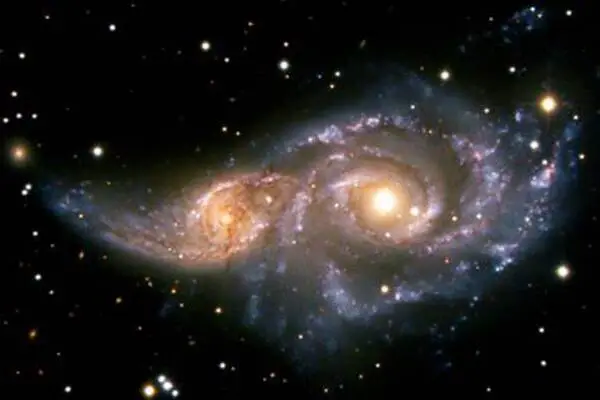
Fundamental relation breaks down
The link between the total star mass of the galaxy and the amount of heavy elements is a little more complicated than that. The rate at which the galaxy produces new stars is also important. But if you compensate for that, you get a lovely, linear relationship: the more massive the galaxy, the more heavy elements. However, recent observations have called this relationship into question.
“When we analyzed the light from 16 of these first galaxies, we saw that they had significantly less heavy elements, compared to what you’d expect from their stellar masses and the amount of new stars they produced,” Heintz explains.
In fact the galaxies turned out to have, on average, four times less amounts of heavy elements that in the later Universe. These results are in stark contrast to the current model where galaxies evolve in a form of equilibrium throughout most of the history of the Universe.
Predicted by theories
However, the outcome is not wholly unexpected. Similar predictions are made by theoretical models of galaxy formation based on elaborate computer algorithms. But we’ve seen it now!
The answer provided by the authors in the article is simply that we are seeing the formation of galaxies. Gravity has attracted the first clumps of gas, which are forming stars.
If the galaxies were left alone, the stars would swiftly fill them with heavy materials. However, vast volumes of fresh, unpolluted gas were rushing down to the galaxies at the time, quicker than the stars could keep up.
“The findings provide us with the first glimpse into the earliest stages of galaxy formation, which appear to be more intimately connected with the gas between galaxies than we previously thought.”
This is one of the initial James Webb observations on the subject, so we’ll have to wait and see what the larger, more complete observations that are now being conducted can tell us. “There is no doubt that we will soon have a much clearer understanding of how galaxies and the first structures began to form during the first billion years after the Big Bang,” concluded Kasper Elm Heintz.
